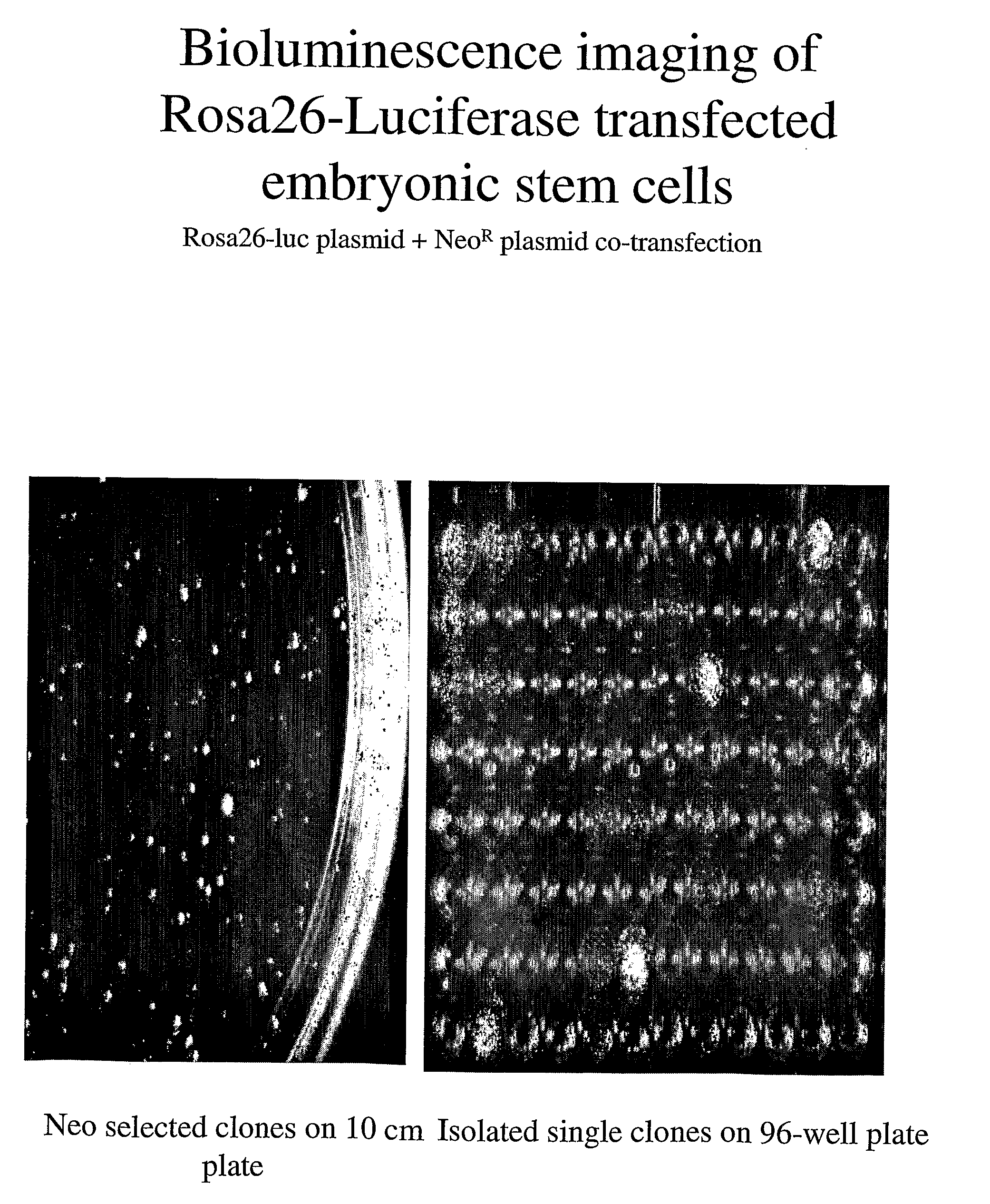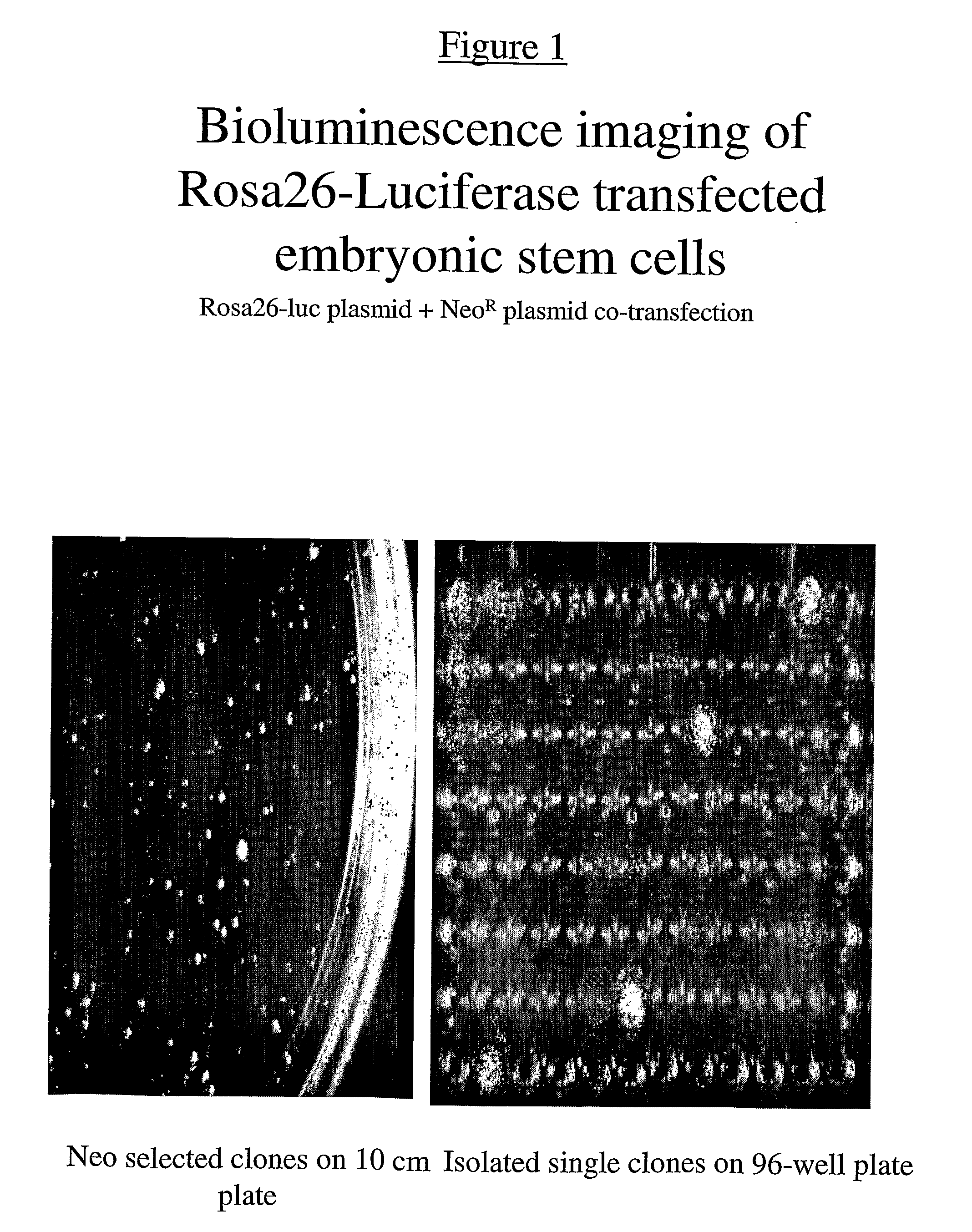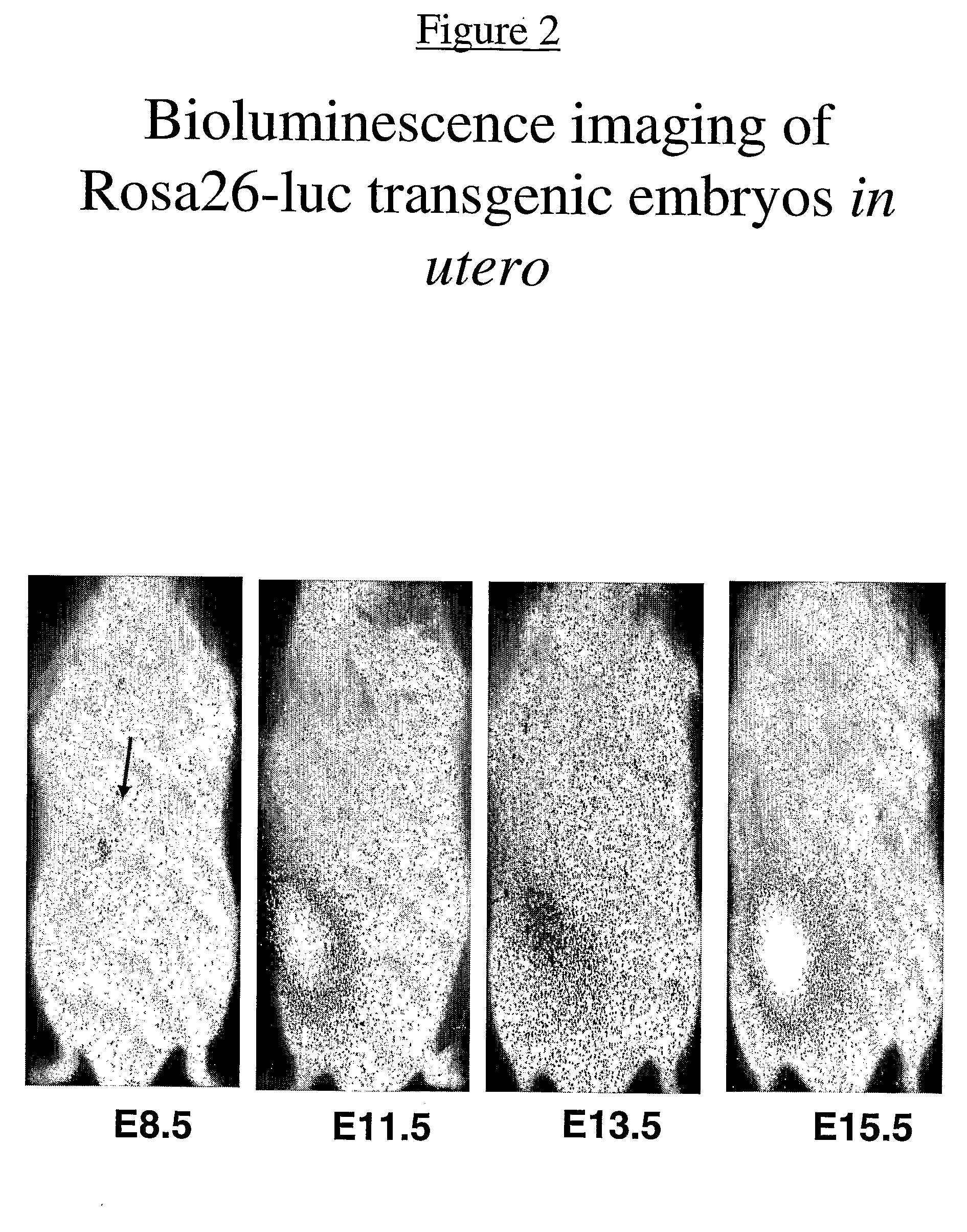Transgenic rosa26-luciferase mice for bioluminescent imaging
a technology of luciferase and mice, applied in the field of transgenic animal models and imaging methods, can solve the problems of reducing the number of experimental time points, sacrificing animals, and only seeing later occurring defects in gene or cell function, and achieve the effects of treatment specificity, toxicity and efficacy
- Summary
- Abstract
- Description
- Claims
- Application Information
AI Technical Summary
Benefits of technology
Problems solved by technology
Method used
Image
Examples
example 1
Creation and Verification of the Rosa26-luciferase Construct
[0107]The Rosa26-luciferase construct was made by cloning the murine Rosa26 promoter as a 1.9 Kb Hind III-Xba I fragment derived from pBROAD3 (InvivoGen, San Diego, Calif.) into a vector containing the 1.7 Kb luciferase gene using convenient restriction sites. A polyadenlyation site was attached to the 3′ end of the luciferase gene for better expression of luciferase.
[0108]The Rosa26-luciferase construct was co-transfected into ES cells with a Neo resistant plasmid (10:1) and selected in G418. Therefore, the selected clones contain either single NeoR plasmid (luciferase negative) or both plasmids (luciferase positive). Media containing the luciferin substrate was added to the cells which allowed them to be selected directly from the plate (FIG. 1). These clones were then grown into isolated colonies in 96 well plates. An example of this is shown in FIG. 1. Cell number in one well in the 96-well plate is about 50,000 -100,00...
example 2
Repopulation of Blood Lineages Using Marrow from Rosa26-luciferase Trangenics
[0111]Hematopoietic stem cells (HSCs) found in the bone marrow (BM) are multipotent. The full spectrum of differentiated blood cells (macrophages, megakaryoctes, erythrocytes etc.) have their origins in HSCs. When a mouse is whole body irradiated it becomes cytopenic. The irradiated mouse may die unless BM containing HSCs is used to “repopulate” the mouse with blood cells. The Rosa26-luciferase transgenic mouse was used as a BM donor to whole body irradiated normal mice. Recipients were either sublethally treated with 350 rads or lethally treated with 2×550 rads gamma irradiation. Each recipient was transplanted with about 106 bone marrow cells. Both donors and recipients are in FVB background. The scheme for doing the experiment is shown in FIG. 7. Sublethally irradiated mice two weeks after transplantation are shown in FIG. 8. Because the irradiation is a 350 rad dose, only 10-20% of bone marrow derived c...
example 3
[0113]T cell populations were assayed in mice that had been irradiated and transplanted with bone marrow from Rosa26-luciferase mice. Recipient mice were prepared by irradiating 2-3 months old FVB mice either at a sublethal dose of 350 rads or lethal dose of 1100 rads (two treatments of 550 rads divided by 3 hrs apart) by using Cesium 137 source. Bone marrow cells were collected from 2-6 month old Rosa26-luc transgenic mice and were injected through the tail vein into recipients at 15-20 million cells / recipient. The host mice were assayed for bioluminescence one week after bone marrow transplantation and cell engraftment was found. One of the advantages of Rosa26-luciferase models is the ability to track cells over time. Antibodies used to deplete immune cells can be useful in reducing the immune response in autoimmune diseases. The mice transplanted with Rosa26-luciferase BM cells were given a one time intraperitoneal antibody injection of either anti-CD4...
PUM
| Property | Measurement | Unit |
|---|---|---|
| temperature | aaaaa | aaaaa |
| pH | aaaaa | aaaaa |
| pH | aaaaa | aaaaa |
Abstract
Description
Claims
Application Information
 Login to View More
Login to View More - R&D
- Intellectual Property
- Life Sciences
- Materials
- Tech Scout
- Unparalleled Data Quality
- Higher Quality Content
- 60% Fewer Hallucinations
Browse by: Latest US Patents, China's latest patents, Technical Efficacy Thesaurus, Application Domain, Technology Topic, Popular Technical Reports.
© 2025 PatSnap. All rights reserved.Legal|Privacy policy|Modern Slavery Act Transparency Statement|Sitemap|About US| Contact US: help@patsnap.com



